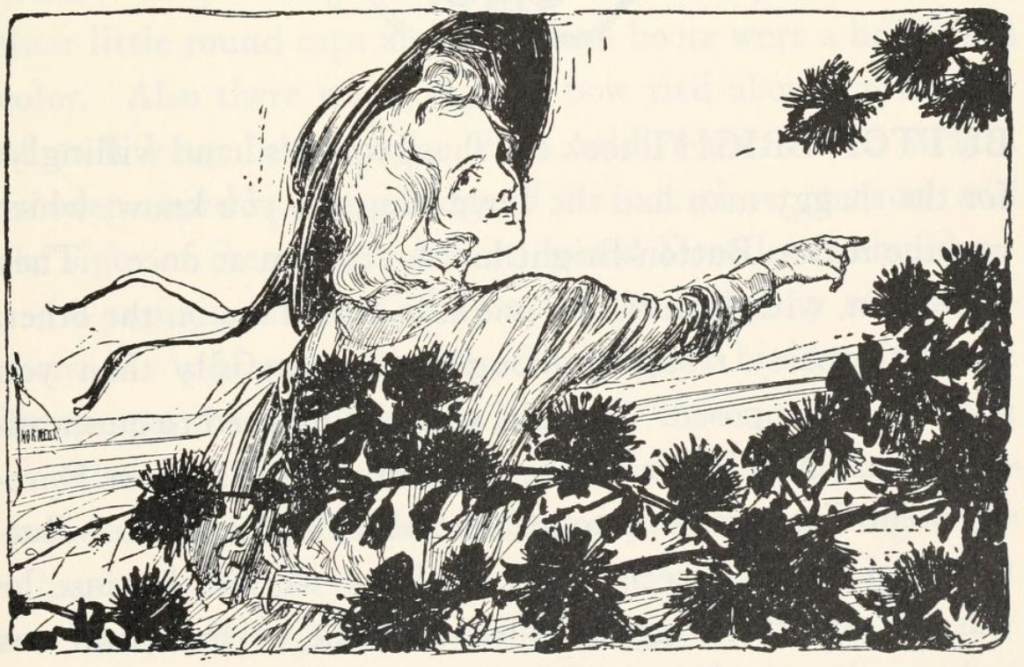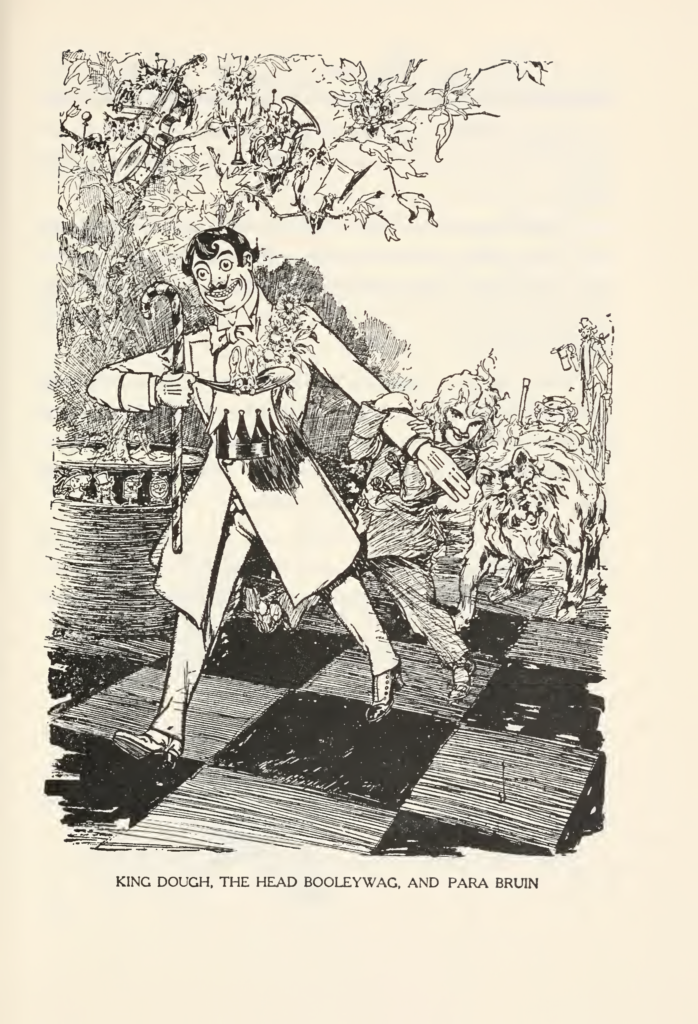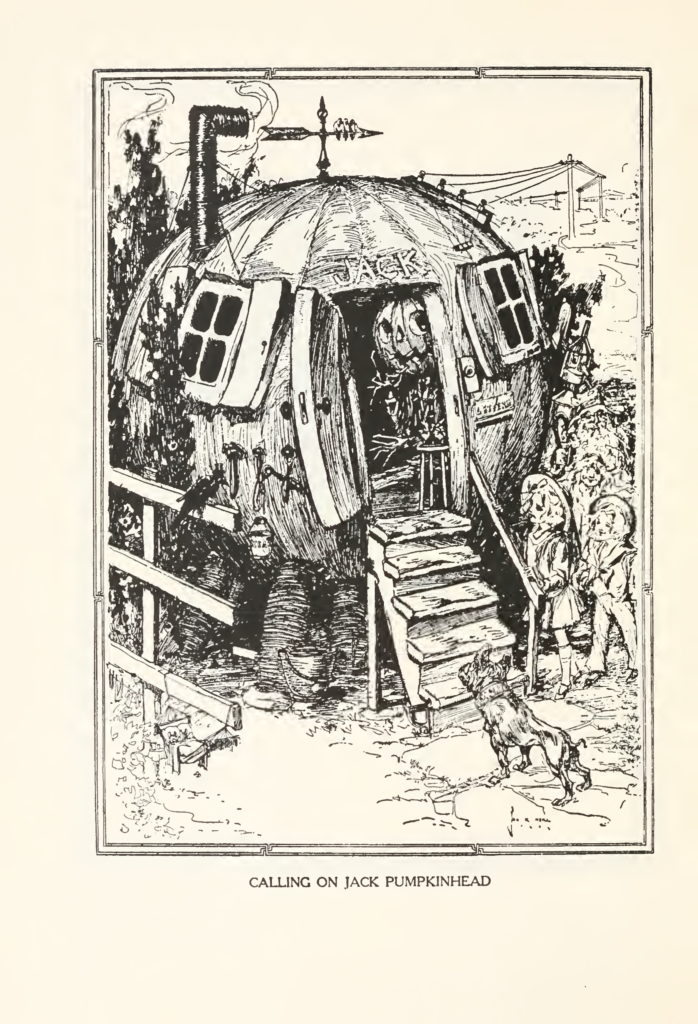As Peter Glassman notes in the afterword, the goal of the journey is not as shallow as restoring Button-Bright and the shaggy man’s heads to normal. The shaggy man, Button-Bright, and Polychrome are all lost and homeless. In helping Button-Bright and Polychrome return to their parents and helping the shaggy man reach a place that will house him, Dorothy, writes Glassman, carries out a task as valuable as showing the Scarecrow, the Tin Woodman, and the Lion that they are not lacking the qualities they desire (264). The Road to Oz is sadly underwhelming compared to The Wonderful Wizard of Oz, and the characters mostly worse. And I object to Glassman claiming that Dorothy helps the shaggy man and the others—if anything, it is the shaggy man who saves Dorothy in both major instances of peril, the Scoodlers and the Deadly Desert—and also Glassman’s belief that the companions in the first novel “realize they possess the qualities they sought” when they never, ever realize it. However, his point is true that The Road to Oz may be more sophisticated that it seems.

With that serious analytical stuff done, now let’s mention some of the weird guests who turn up for Ozma’s birthday party. They include Glinda (naturally), the Good Witch of the North, the king and queen of Ev from Ozma of Oz, Santa Claus with the Ryls and Knooks, a living wax doll called the Queen of Merryland, and various other characters from Baum’s non-Oz fantasy novels. Perhaps, wanting to end the Oz series, he thought tying his other works into its universe would pique readers’ interest. Based on this expanded canon, it is worth mentioning that the dreaded Nome King might actually first appear in Baum’s novel The Life and Adventures of Santa Claus, though there he is called the Gnome King, has children of his own, and provides material for the construction of Santa’s sleigh. Given that Santa is apparently a highly respected person in fairyland, this somewhat recontextualizes the Nome King welcoming Dorothy’s belief that he is like Santa—it’s sort of like calling him really beloved and powerful.

The gingerbread man named King Dough, the living toy bear named Para Bruin, and Head Booleywag Chick the Cherub come from the novel King Dough and the Cherub. This might interest my readers because, in that text, Baum refused to assign any gender to the androgynous Chick the Cherub to the point of referring to the character as “it.” Apparently, Baum’s refusal to gender Chick confused his editor. Today, people would likely read Chick as nonbinary. Dorothy even wonders about Chick’s gender: “Is it a boy or a girl?” (222)
So now we have a trans character, a nonbinary character, and a reasonable case Dorothy is gay, and the same for the Scarecrow and Tin Woodman (well, the latter would be bi, considering his love for the Munchkin woman before the Wicked Witch of the East destroyed his body). When Polly, ironically wearing a rainbow dress, tells Dorothy she has a lot of queer friends, Dorothy responds, “The queerness doesn’t matter, so long as they’re friends” (184).
According to Glassman’s afterword, the other novels The Road to Oz ties into Oz canon are Dot and Tot of Merryland and Queen Zixi of Ix.
Other miscellaneous weird and interesting details:
Foxes despise Aesop because they believe his fables are unfairly prejudiced against foxes (55).
Although King Dox and King Kik-a-bray both do Dorothy’s friends harm, Ozma lets both of them attend her birthday party. Meanwhile, she refuses to let the completely peaceful and friendly Musicker attend for no other reason than that she finds him annoying due to his fantastical disability—which seems like a bizarre lesson to teach kids.
Jack Pumpkinhead now lives in the Country of the Winkies, where his mother Ozma periodically visits him to carve him a new head as his old one begins to rot, each one’s composition minutely altering his personality, though most of what makes him himself is in the rest of his body (174). (This is a big scene for Jack fans since it is the first time Baum has given him more than a sentence of attention since The Marvelous Land of Oz—Jack has so far survived mostly because Neill has kept drawing him in every book.) The old heads Jack keeps in a graveyard outside his home.

The Land of Oz has electricity: Neill draws power lines connecting to Jack’s house!